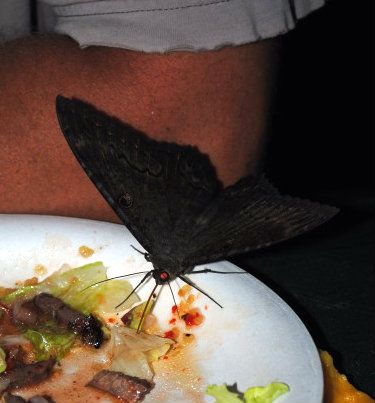Originally posted by ecomujeres
Another point to consider: from what I've been reading about the Sulphur butterflies, they are migratory. This means that they may actually be
following food sources that are appearing after the rains and so aren't neccesarily leaving their chrysali en mass, but are arriving from elsewhere
and congregating on preferred food sources, along with local hatchlings. |







